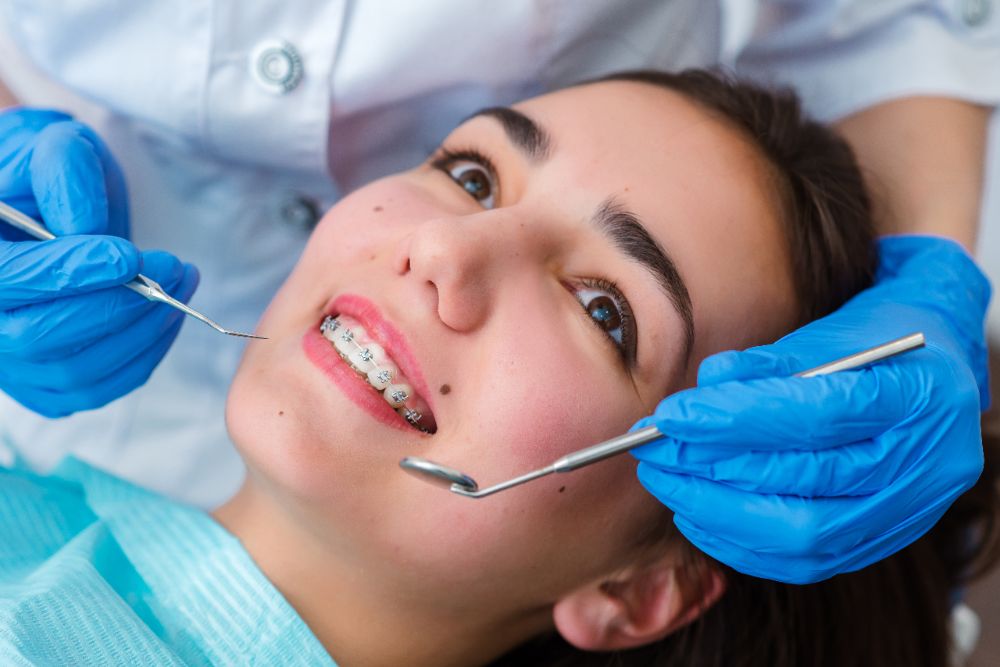Why Cumming Invisalign is the Perfect Option for a Discreet Orthodontic Remedy
Why Cumming Invisalign is the Perfect Option for a Discreet Orthodontic Remedy
Blog Article
Comprehensive Guide to Orthodontics Procedures for Dealing With Dental Misalignments
Understanding the intricacies of each treatment, including their mechanisms, advantages, and prospective drawbacks, is crucial in making educated choices regarding one's orthodontic treatment. As we browse through the thorough overview to orthodontic procedures for correcting oral imbalances, the intricate information of each approach will unfold, losing light on the path towards a unified and practical dental positioning.
Orthodontic Procedures Introduction

In enhancement to clear aligners and conventional braces, orthodontists may likewise suggest other interventions like headgear, palatal expanders, or retainers to attend to certain placement concerns (invisalign). These procedures are tailored to each client's distinct requirements and may involve a combination of therapies to attain the wanted outcomes. Routine modifications and tracking are critical components of orthodontic therapy to make sure development is on track and to make any necessary modifications along the road. By undertaking orthodontic treatments, people can not just attain a straighter smile but also improve their overall dental wellness and feature.
Standard Dental Braces: Just How They Function
When taking into consideration orthodontic therapies for oral imbalances, standard dental braces stand out as a tried and true approach for correcting teeth positioning. Traditional braces consist of brackets, cords, and bands that function with each other to use constant pressure on the teeth, gradually moving them right into the wanted placement.
As pressure is used to the teeth via the braces, the bone surrounding the teeth is improved to support the new tooth positions. Patients will certainly require normal changes at the orthodontist's office to make sure the braces proceed to apply the correct stress for efficient teeth activity.
Invisible Aligners: Cons and pros
These clear, tailor-made trays are virtually undetectable when worn, making them an attractive alternative for individuals looking for an extra aesthetically pleasing orthodontic treatment. Individuals can get rid of the aligners before eating or cleaning their teeth, reducing the danger of food obtaining stuck in the appliance and streamlining the cleansing process.

Surgical Orthodontic Options
Surgical treatments in orthodontics present sensible alternatives for attending to complex oral misalignments that might not be successfully fixed through standard orthodontic treatments. While typical braces and invisible aligners can correct lots of orthodontic issues, particular cases call for surgical intervention to achieve ideal results. Surgical orthodontic choices are typically suggested for severe malocclusions, considerable jaw disparities, and cases where the underlying bone framework requires modification to accomplish proper positioning.
One common surgical orthodontic treatment is orthognathic surgical find procedure, which involves rearranging the jaws to deal with functional problems such as trouble speaking or chewing. This surgical procedure is often carried out in partnership with an orthodontist that helps align the teeth before and after the treatment. Surgical orthodontics might also include treatments to expose affected teeth, eliminate excess periodontal cells, or improve the jawbone to Read Full Article create a more harmonious face account.
Prior to considering surgical orthodontic choices, patients go through a comprehensive assessment to figure out the need and potential benefits of such interventions. orthodontics. While surgical procedure might appear challenging, it can dramatically boost both the feature and visual appeals of the smile in situations where traditional orthodontic treatments fail
Retainers and Post-Treatment Care

Post-treatment treatment includes complying with the orthodontist's instructions carefully. This may include proper dental hygiene practices, attending follow-up appointments, and wearing the retainers as suggested. Failing to follow post-treatment care instructions can cause regression, where the teeth gradually relocate back in the direction of their initial settings. Consistent retainer wear, excellent oral health, and normal dental examinations are essential for keeping the results achieved with orthodontic surgical treatment and guaranteeing the lasting stability of the corrected oral alignment.
Final Thought
In verdict, orthodontic procedures use various choices for remedying dental misalignments. Typical braces utilize steel braces and wires to move teeth right into proper positioning. Unseen aligners offer a more very discreet choice but might not appropriate for all cases. Surgical orthodontic choices are offered for extra severe imbalances. dental works Retainers are generally used post-treatment to preserve the brand-new alignment. In general, orthodontic treatments can effectively enhance oral wellness and visual appearance.
As we navigate through the extensive guide to orthodontic procedures for correcting oral misalignments, the complex information of each method will certainly unfold, shedding light on the path toward a functional and unified dental placement. - aligners
One of the most common orthodontic treatments is the usage of dental braces, which consist of metal brackets and cords that use gentle pressure to progressively change teeth into the desired position.When considering orthodontic therapies for dental misalignments, conventional braces stand out as a reliable approach for remedying teeth positioning. In addition, invisible aligners might not be appropriate for complex orthodontic concerns that need more substantial teeth motion, as they are generally advised for moderate to moderate instances. Retainers are tailor-made orthodontic devices made to hold teeth in their remedied positions after the conclusion of orthodontic treatment.
Report this page